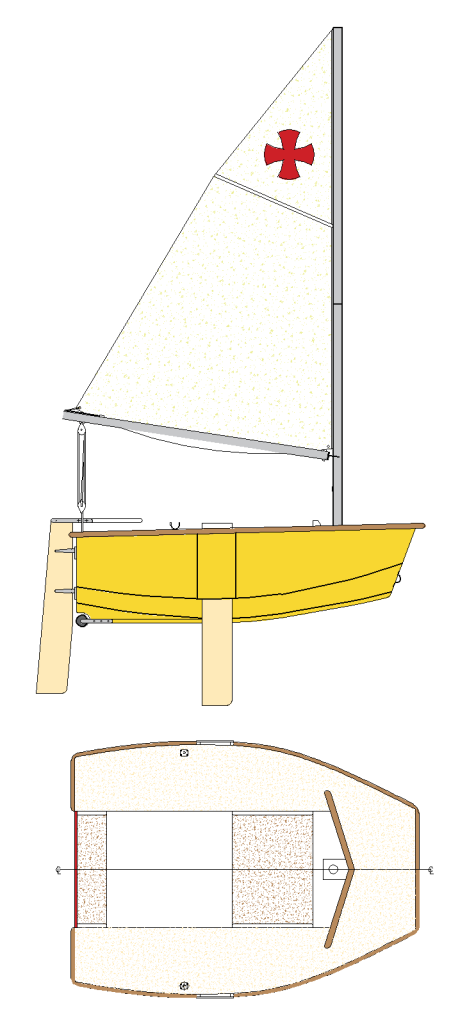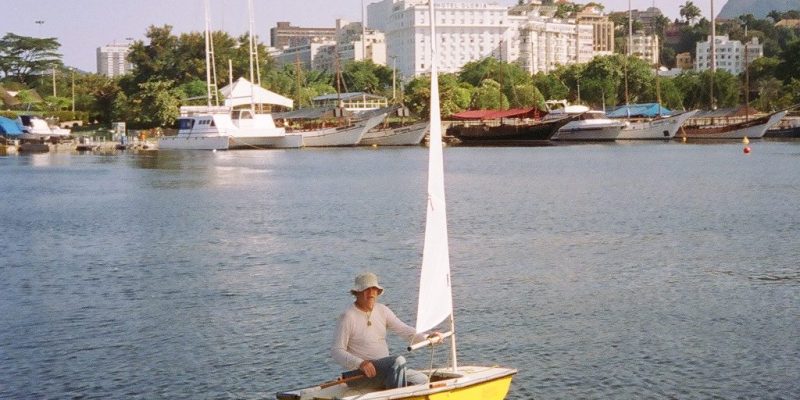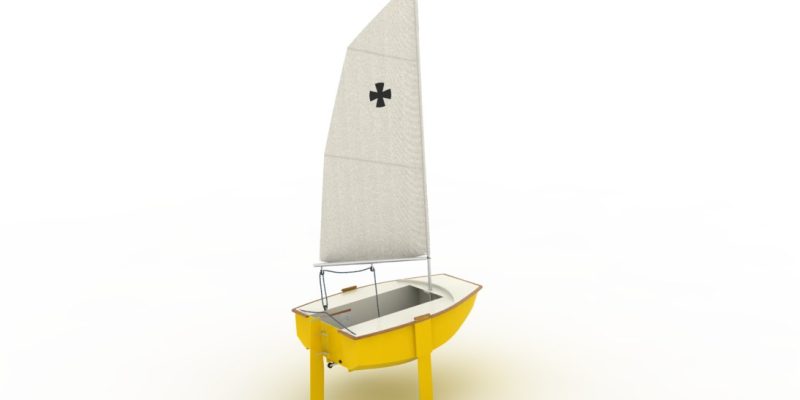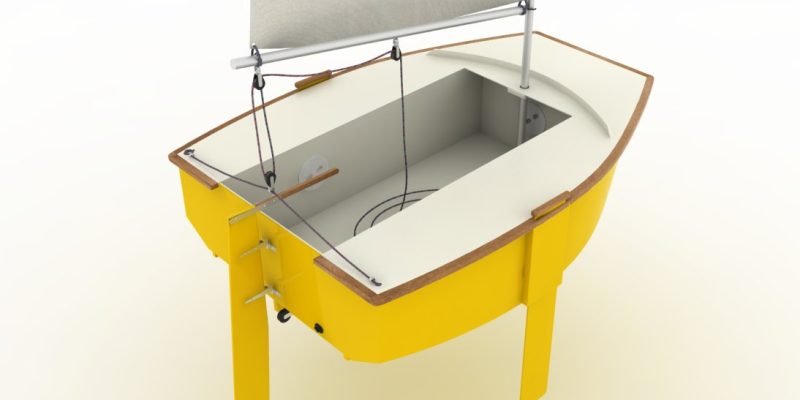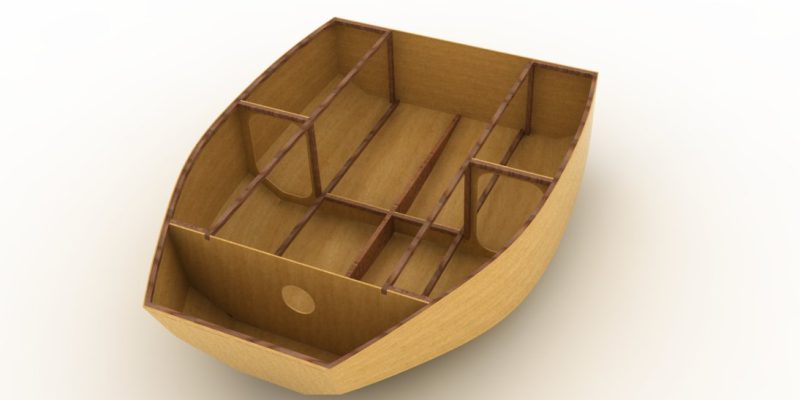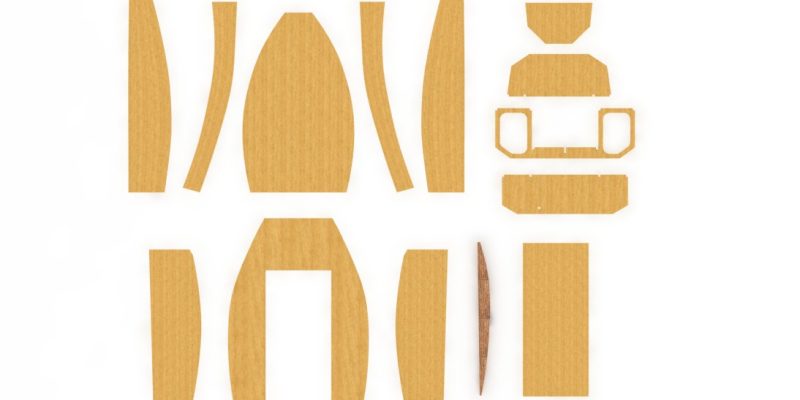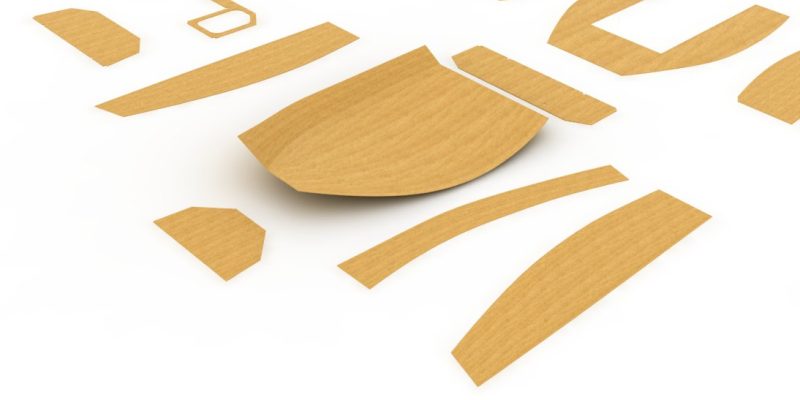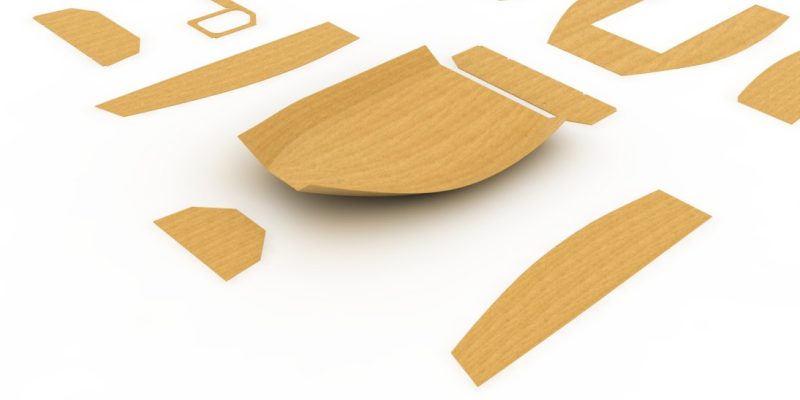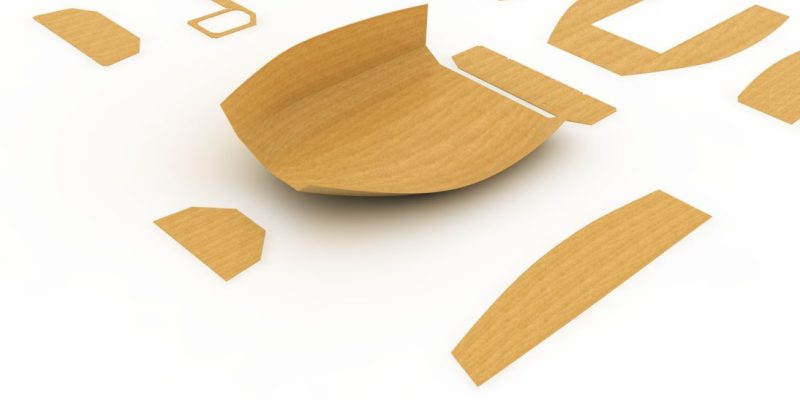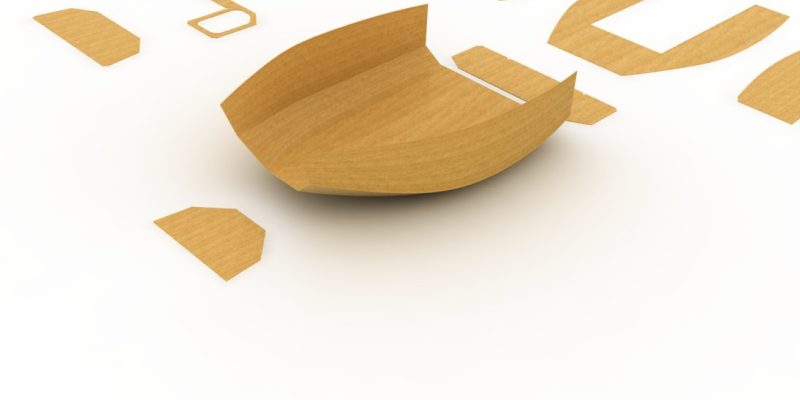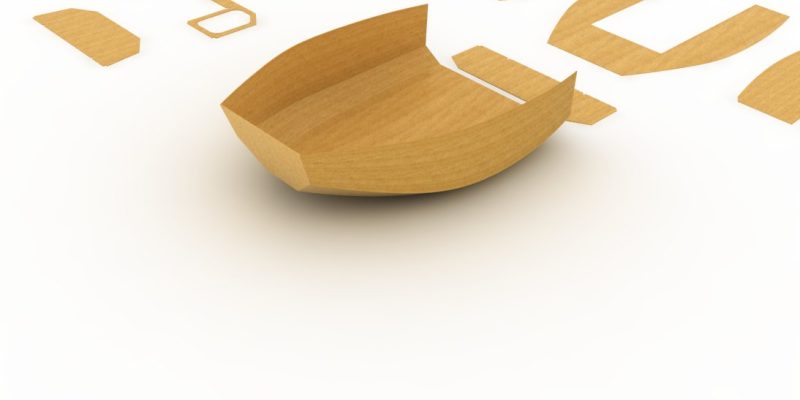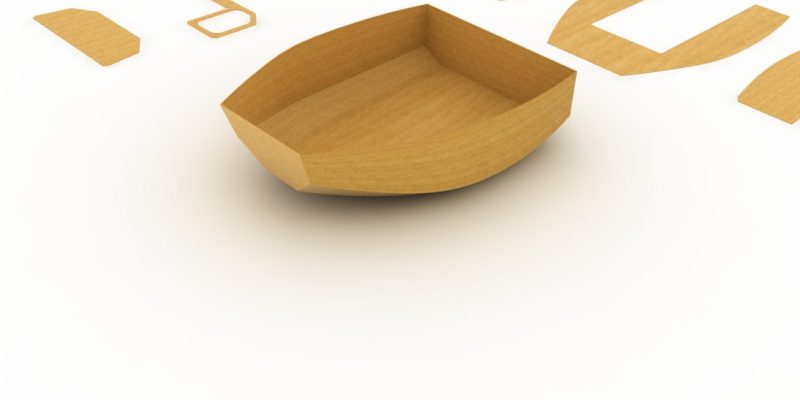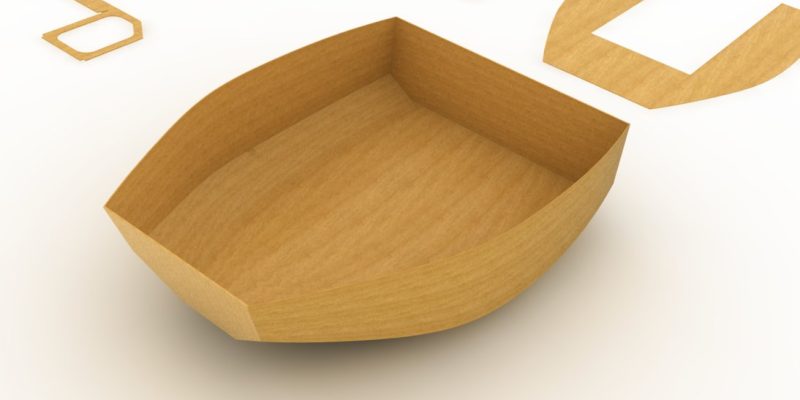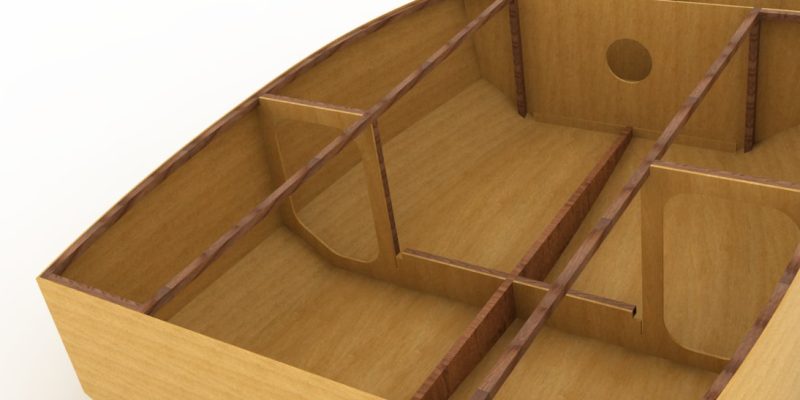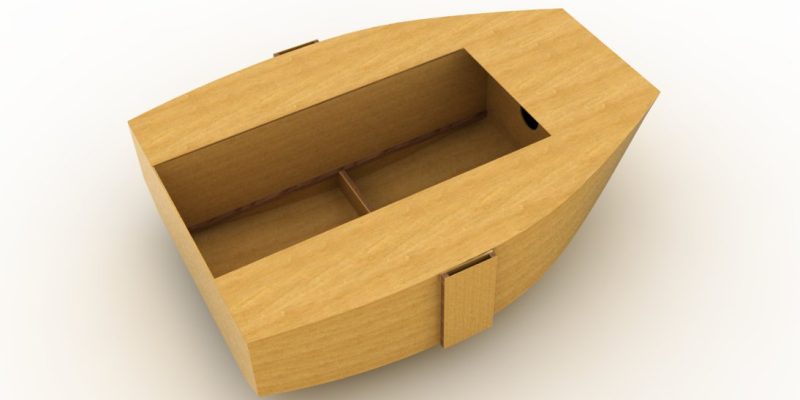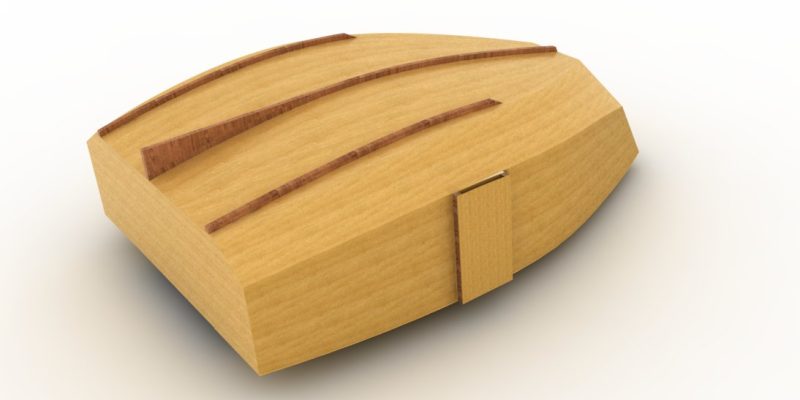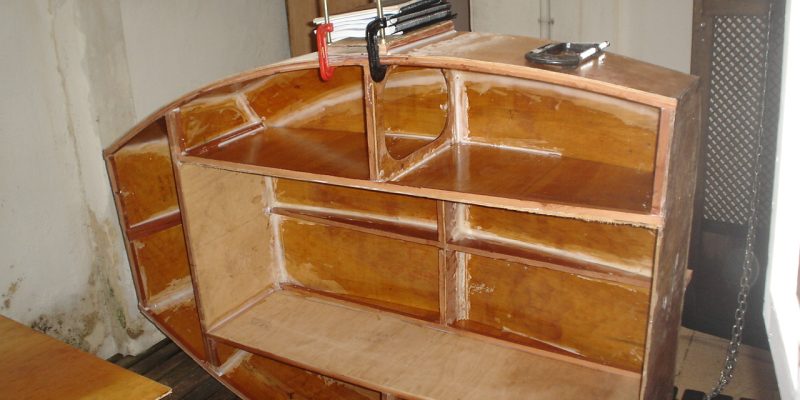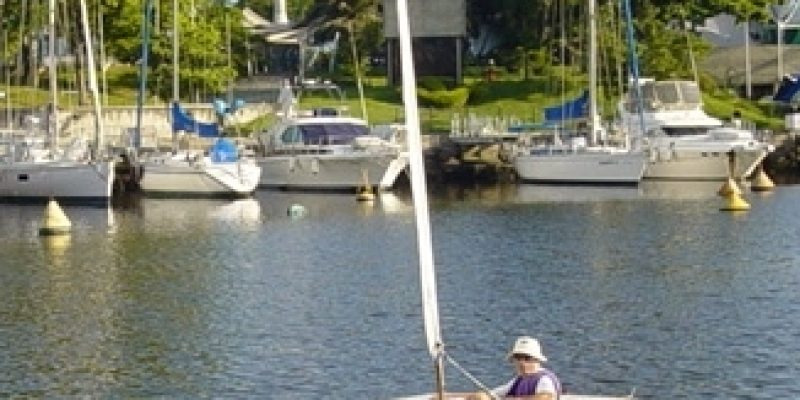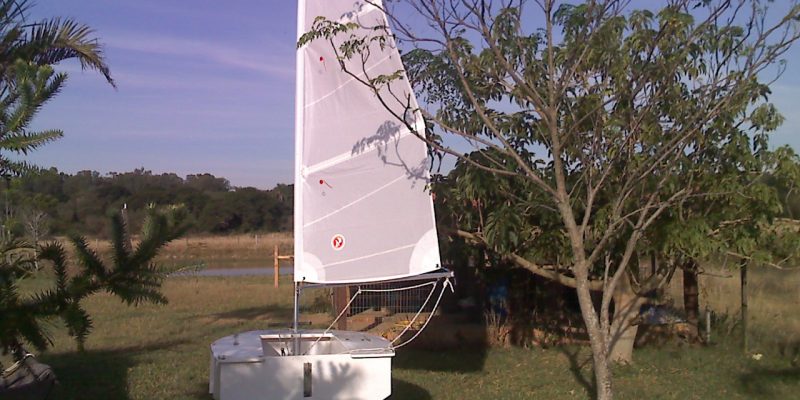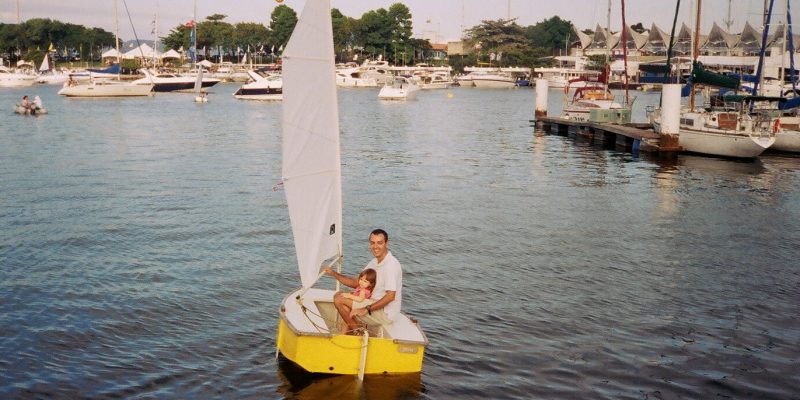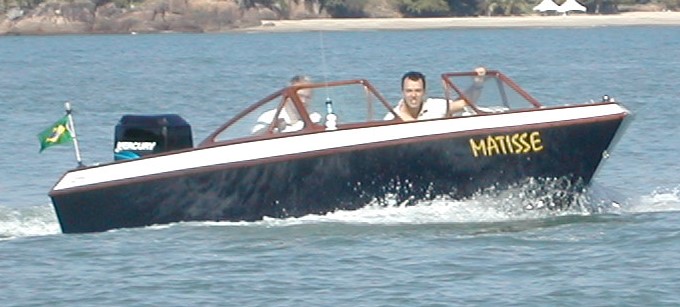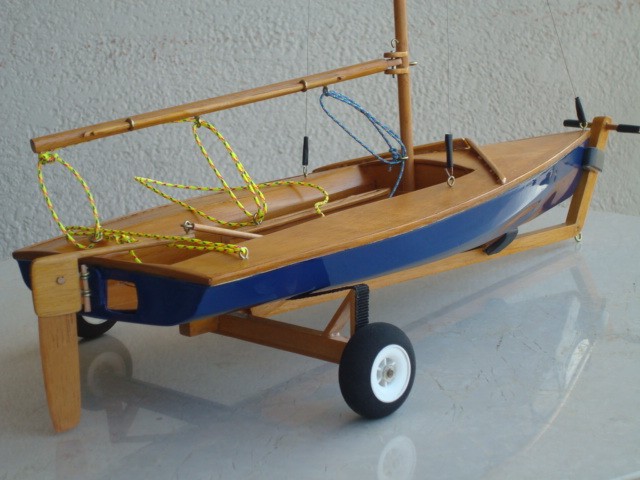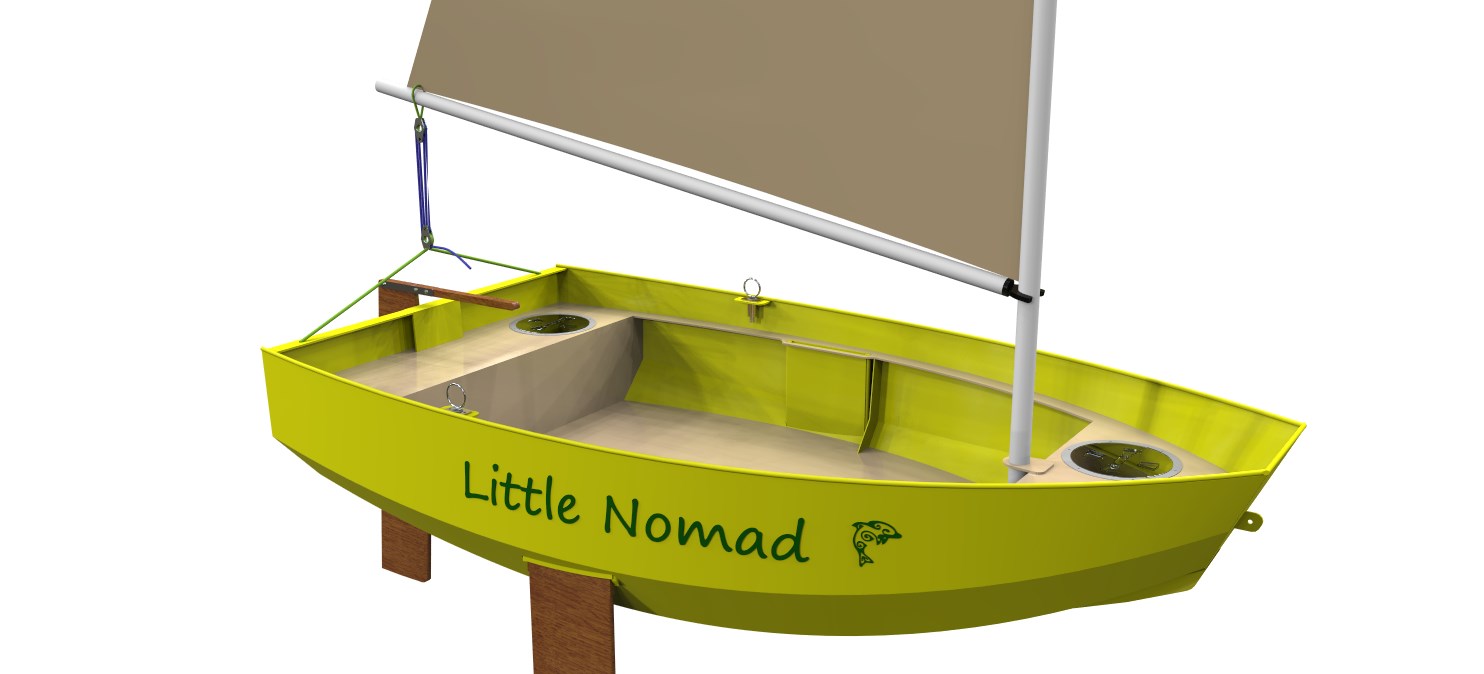Boat Plans - Caravela 1.7
Versatile dinghy intended to be used as a tender, leisure sailboat and life-saving craft.
This dinghy is intended to be used as a tender, leisure sailboat and, in an emergency, it can even be used as life-saving craft. Its compact dimensions allow it to be easily stowed on deck, or on top of cabin trunk coach-roofs of almost any cruising sailboat, except the very small ones.
Its short length and lightness are an invitation for having it as a solid dinghy tender. The fact that it can be propelled by sail, oars, paddles, or outboard motor increases its versatility. A wheel attached to a small skeg helps pulling it out of the water if the ground isn’t too irregular.
As a sailboat the Caravela 1.7 gives a good opportunity to enjoy dinghy sailing when the mother boat is at anchor. Being unsinkable and stable, it can be used by children, and for that matter, is a good training boat. The two leeboards are handy, especially because they don’t clutter the cockpit.
Building the dinghy Caravela 1.7 provides you the opportunity to improve your skills as an amateur builder gathering experience with an easy to build, affordable craft.
Technical Data
Length Overall
1.7 m
Beam
1.24 m
Max. Height
0.48 m
Weight (approx.)
35 kg
Displacement (2 persons)
200 kg
Reserve buoyancy
390 l
Sail Area (Leisure)
2.43 m2
Sail Area (Survival)
1.43 m2
Construction
Ply-glass
Construction
Ply-glass
Boat Description
If for some highly unfortunate reason you need to abandon your boat in an emergency, you will choose to activate the EPIRB and wait for rescue. If you are in such a bad day that rescue does not find you may wish to have capacity to reach safe heaven by your own means. Having a dinghy that can take you there with wind power gives you that capacity.
The Caravela 1.7 is capable of sailing even in bad weather conditions. This dinghy is able to take two persons towards the closest land, provided no beating against the wind is required.
The Caravela 1.7 with its shorter sail plan may be considered a life-saving vessel for the following reasons:
1 – The three water-tight compartments have a total volume of 390 litres, which allow up to two persons to be carried with positive flotation, with a reasonable safety margin.
2 – Two of these compartments have inspection ports (deck plates) which allow for dry storage of personal belongings and emergency equipment.
3 – The cover that we recommend to be made to protect the hull when it’s lying on deck upside-down, when inverted and with its hem lashed under the rubbing-strake, makes a canopy that provides shade and protects the crew from the elements.
4 – Unobstructed cockpit (yes, this dinghy has a watertight cockpit, even though it is self-draining only when the dinghy is not on service, bliss when it pours heavy rains at night, the water draining by scuppers, not requiring to be bailed by hand on these occasions. You only must remember to shut the scuppers before boarding the dingy) which allows one person to get some rest at a reasonably comfortable position.
5 – A reduced sail plan and a rig that can be installed by one person unassisted, even if the dinghy is drifting away from the mother boat.
6 – The watertight fore-castle allows that one person at a time can climb onboard, with no need of external help. The first person that climbs aboard takes the aft seat to balance the trim for the second one to come aboard.
Some equipment may enhance the chances of survival, like portable GPS and VHF, as well as a hand operated desalinator.
Even though the dinghy Caravela 1.7 may serve as a life-saving craft, it should not be considered as so in substitution of the country’s mandatory life-saving equipment. There is no restriction in any legislation that you have a complementary means to cope with the emergency of a shipwreck.
Browse Gallery
See Related Plans

